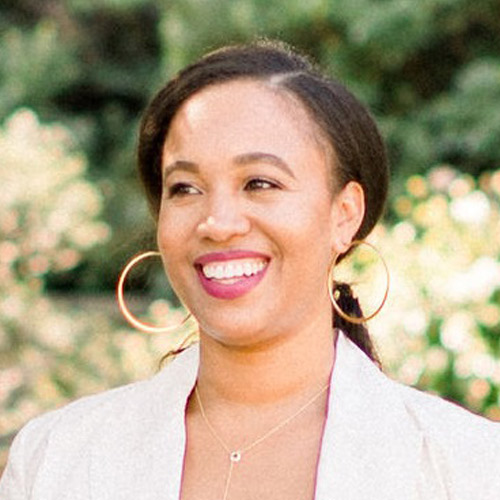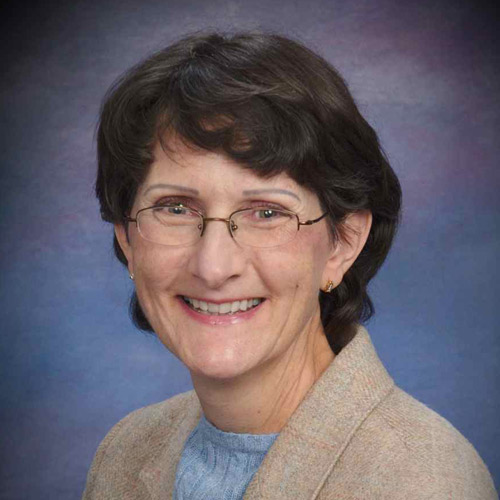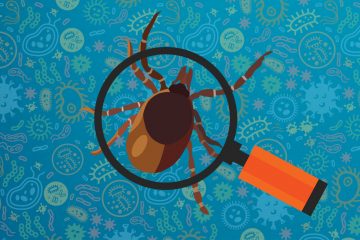T he Tick-Borne Disease Working Group is organized under the auspices of the United States Department of Health and Human Services. Panelists include seven public members and seven members who represent federal agencies. There are also subcommittee members, who help the Working Group by doing research and making recommendations regarding the panel’s upcoming Report to Congress, due in December 2020.
Other important forms of input for the Tick-Borne Disease Working Group include written and spoken public comments.
The following remarks were delivered in person or by phone at the March 4, 2020, meeting in Philadelphia.

By Phyllis Mervine
Founder and president of LymeDisease.org
Condemned to a Life of Debilitating Illness? There’s a Better Way.
The single most important thing the Tick-Borne Disease Working Group can do right now for the Lyme community and all the patients suffering with Lyme disease is to ask Congress to instruct the CDC to educate the medical community about the two standards of care.
For years, the CDC promoted and linked to the Lyme diagnostic and treatment guidelines of the Infectious Diseases Society of America (IDSA). This violated its own ethics rules about not taking sides in a scientific debate when the evidence is uncertain, undermining public trust in government.
They persisted even after new International Lyme and Associated Diseases Society (ILADS) guidelines were published by the National Guideline Clearinghouse, while the IDSA guidelines were delisted for being out of date.
Today, inexplicably, the CDC does not mention anywhere on its website the only peer-reviewed guidelines that adhere to the rigorous Grading of Recommendations Assessment, Development, and Evaluation (GRADE) evidence assessment standards recommended by the National Academy of Sciences.
GRADE recommendations take into account not only the quality of the evidence but also the balance between benefits and harms and patient values and preferences.
The CDC no longer recommends the IDSA guidelines explicitly. Instead, it promotes IDSA diagnosis and treatment recommendations, chapter and verse. It completely fails to mention the ILADS perspective or even that there are different guidelines.
There are two big problems with this. First, the IDSA guidelines recommend the use of the restrictive surveillance case definition for clinical diagnosis.
As Paul Mead of the CDC has noted in the past, neither research definitions nor surveillance definitions are developed to guide clinical diagnosis and care, nor should they be.
Such definitions leave out the vast majority of patients diagnosed in clinical practice. As a result, people are not being diagnosed and are condemned to a life of debilitating sickness. Acknowledging the two standards of care would allow more patients to be diagnosed early and saved from years of suffering.
Second, the standard IDSA diagnosis and treatment recommendations leave many patients chronically ill—applying a one-size-fits-all approach to a complex problem. The ILADS standard of care solves this problem by providing individualized treatment that takes into account the patient’s disease risk, severity, and treatment response.
It is time for the CDC to inform the medical community that there are two standards of care. By taking this simple step, the CDC could save lives. Please ask Congress to make this happen.

By Melissa Potter
LymeDisease.org’s director of patient engagement and outreach.
MyLymeData Helps Build a Collaborative Research Engine for Lyme Disease
I am here on behalf of LymeDisease.org. LymeDisease.org is one of the oldest Lyme disease nonprofits in the nation. We have played an instrumental role in patient- and science-based advocacy both in connection with Lyme disease and more broadly in national healthcare policy.
Members of LymeDisease.org have served on advisory panels and presented on patient engagement in government-funded organizations, such as the Patient-Centered Outcomes Research Institute, the National Institutes of Health (NIH) Collaboratory, the White House’s Precision Medicine Initiative, as patient partners for the Society to Improve Diagnosis in Medicine, and as subcommittee members for this Working Group.
We advise researchers at the University of Chicago, and we have authored two academic textbook chapters on patient engagement and patient registries.
Modern medicine knows a lot about how to treat early Lyme disease, but even so, treatment failure rates remain unacceptably high (10 to 20 percent). Yet, little is known about what works—what is effective—for treating late or persistent Lyme disease.
NIH-funded trials in persistent Lyme disease have been very small (37–129 people). By their nature, they do not observe real-world patients responding to the variety of clinical treatments used to improve patient quality of life.
This is an area in which patient registries excel. At the last Tick-Borne Disease Working Group meeting, Dennis Dixon noted that patient registries are one way to advance the knowledge of Lyme disease. However, neither he nor this group seemed to be aware that a large patient registry for Lyme disease presently exists.
MyLymeData is a patient registry developed by LymeDisease.org that enables patients to pool longitudinal healthcare data. Since its launch in November 2015, over 12,000 patients have enrolled.
It is modeled after many of the rare disease registries and adheres to the patient registry recommendations of the Agency for Healthcare Research and Quality. Like most patient registries, entry criteria are intentionally broad—patients must be U.S. residents who are clinically diagnosed with Lyme disease.
The registry has gathered over three million data points on Lyme disease demographics, tick bites, diagnosis, symptoms, lab tests, co-infections, treatments, and quality of life.
Last year, we published our first peer-reviewed study analyzing data from the registry. We also released our MyLymeData Chart Book, highlighting results from Phase 1 of the study.
We are collaborating on a tissue bio-repository with the National Disease Research Interchange and the Bay Area Lyme Foundation. We also work with academic researchers at UCLA and the University of Washington. The National Science Foundation has funded UCLA researchers to explore big-data analytics using data from MyLymeData.
This has been an essential step in building a collaborative research engine designed to realize the promise of big data in Lyme disease.

By Mira Shapiro
Mira Shapiro, MSc, is a biostatistician/data scientist. Her work with LymeDisease.org’s MyLymeData Patient Registry has been presented at the International Lyme and Associated Diseases Conference (ILADS) , in peer-reviewed publications, and at the LymeMind 2019 conference.
Accelerating Pace and Increasing the Depth and Breadth of Lyme Disease Research
I am here today on behalf of LymeDisease.org. I am also a chronic Lyme disease patient and a biostatistician. My colleague Melissa Potter just spoke about our organization’s history, our MyLymeData patient registry, and our collaborations and how they are driving our efforts to build a Lyme disease research engine.
I would like to share information about some of our Institutional Review Board (IRB)-approved research. We use data from over 12,000 enrolled patients and over three million associated data points to better characterize the Lyme patient population, for whom previously there was very little information.
All of these patients expressly consented to this use of their data. We act as a data steward on behalf of the community to ensure that their data is used solely for the benefit of patients.
As you probably are aware, Lyme disease is a research-disadvantaged disease. There are few clinical trials on patients who remain ill after a short course of treatment. Those trials have been hampered by very small sample sizes that do not allow the type of subgroup analysis essential to tease out differences among patient groups in terms of symptom severity, diagnostic delays, and treatment response.
In the fall of 2018, we published our first peer-reviewed article using data from over 3,900 registry patients to distinguish between subgroups of patients who respond more favorably to antibiotic treatment and those who do not.
Using a widely validated global rating of change scale, we identified a subgroup of 35 percent of patients who were high treatment responders, versus groups of low treatment responders and non-responders.
Why do these patients respond so differently to treatment? Do some of them have co-infections? Were there diagnostic delays? Different treatments or treatment durations? We don’t know yet, but examining real-world data from patient registries may provide the path to more individualized care.
Subgroup analysis of large samples allows us to uncover information that otherwise may not be available using small randomized controlled trials.
We have several more research studies in the pipeline. We collaborate with research partners to conduct big-data research studies. We can also assist with clinical trial recruitment, augment clinical trial research findings, and generate hypotheses for further clinical studies.
We view the patient registry as a vital part of a research engine that can accelerate the pace, and increase the depth and breadth of Lyme patient research.

By Dorothy Leland
Vice president and communications director for LymeDisease.org.
Proxy Votes Violate Spirit of Tick-Borne Disease Working Group
I am vice president of LymeDisease.org. I have two points regarding yesterday’s meeting. The first speaks to process integrity—how the Tick-Borne Disease Working Group should operate.
Why in the world did David Walker cast proxy votes for Eugene Shapiro?
The point of the Working Group is for people from diverse scientific viewpoints to listen to each other, discuss the issues, and then decide how to vote. Dr. Shapiro wasn’t in the room and didn’t take part by phone. Yet, Dr. Walker cast votes on Dr. Shapiro’s behalf.
Why is this even allowed? If it doesn’t technically violate a rule, it certainly violates the spirit of the Working Group.
It mocks the concept of the healthy exchange of ideas. Here, somebody doesn’t have to participate at all … and still has a vote.
When Dr. Shapiro was first named to this group, LymeDisease.org protested vociferously because of his flagrant financial conflicts of interest. More than 37,000 members of the Lyme community signed our petition to remove him from this panel. It fell on deaf ears.
My second point about yesterday’s meeting concerns Ben Beard’s defense of the CDC website and his dismissal of questions about the validity of Lyme disease testing.
Beard stated—and I quote—“The vast majority of Lyme disease patients are served quite well by the guidance we have on our website. The diagnostic test is reliable in terms of it telling you what you expect to hear.”
Here’s my response: It’s true that some people get Lyme disease, get treated, and get well in short order. But many people don’t get well. They stay desperately sick for years, often losing their jobs, their homes, their marriages, their families. Children lose their childhoods, often too impaired to go to school.
The CDC acknowledges that 10 to 20 percent of Lyme patients remain ill after treatment. Over 20 years, that could mean up to three million people with persistent symptoms of Lyme disease using the CDC’s own figures.
And that doesn’t count people who remain undiagnosed and untreated. They are the ones most ill served by the CDC’s “guidance” and a lousy lab test.
Beard’s comment highlighted another process irregularity with the Working Group: 2018’s group had three representatives of the Lyme patient community; this 2020 group has only one—Pat Smith.
Meaningful patient representation requires more than a single voice crying in the wilderness.
When Smith raised questions about patients with persistent Lyme disease, the CDC spokesman dismissed those concerns—and there was nobody else willing to support the patient point of view.
The Tick-Borne Disease Working Group was created due to the efforts of patients with persistent Lyme disease, not people who got well quickly.
Those folks don’t need a Working Group. I urge you not to forget your core constituency.

By Dr. Elizabeth Maloney
Dr. Elizabeth Maloney is president of Partnership for Tick-borne Diseases Education, a 501(c) that provides educational resources to medical professionals and the public. She lives in a high-Lyme area of Minnesota.
CDC’s Recommendations for Lyme Epitomize Institutional Bias
Good morning, committee members. I’m Dr. Elizabeth Maloney. I spoke with you at the January meeting and appreciate the opportunity to speak with you again.
I want to address statements made regarding the independence and neutrality of the CDC’s in-house treatment guidelines made yesterday.
I am concerned about the CDC’s in-house treatment guidelines because they epitomize the institutional bias patients, advocates, and providers face in regard to Lyme disease.
Despite claims to the contrary, the CDC treatment recommendations are merely a synopsis of the IDSA guidelines.
The CDC recommendations cite only four references. One of the four states that its treatment recommendations come from the IDSA, while another review ignores ILADS 2014 treatment guidelines entirely.
The sole author of the first review paper was one of four authors of the second. And that latter group included the lead author of the 2006 IDSA guidelines. This suggests that the CDC did not do its own, independent assessment of the evidence.
It was said that the CDC treatment recommendations work well for most patients with erythema migrans (EM) rashes. I’ve reviewed the comparative trial evidence and concluded that reported outcomes cannot be taken at face value.
My review identified significant design and execution problems as well as unsupported conclusions. Failing to discuss these obvious shortcomings suggests to me that the CDC treatment recommendations were a foregone conclusion, and that the group simply worked backward to pick a few supporting references.
Perhaps that explains why a 2013 study of 74 EM patients by Aucott and colleagues wasn’t cited. That carefully designed study demonstrated that 21 days of doxycycline failed to return 40 percent of study participants to their pre-Lyme baseline at six months post-treatment, including 11 percent who had ongoing symptoms and functional decline and 25 percent who had ongoing symptoms alone. If this represents “works well for most,” we’ve set the outcome bar much too low.
The CDC suggests that U.S. EM patients can be treated with 14 days of cefuroxime or amoxicillin, yet none of the U.S. trials used these agents for fewer than 20 days. It is said that 10 days of doxycycline is sufficient, but of the two trials of that duration, one had a noncompletion rate of 50 percent, and in the other, 36 percent of the patients were retreated.
Given the poor quality of the CDC’s process for generating recommendations, I now think it’s imperative that the curriculum development team include members who understand the limitations of the current evidence and who include a broader diversity of scientific viewpoints to avoid group think and bias. Otherwise, clinicians will get the same old, same old, and patients who might be helped won’t be.

By Phyllis Mervine
Founder and president of LymeDisease.org
NIH’s COVID-19 guidelines offer useful advice for Lyme disease, too
Phyllis Mervine prepared the following remarks as public comment to the federal Tick-Borne Disease Working Group. Due to phone connectivity problems, however, she was unable to deliver them herself. Therefore, at April 27’s online meeting, they were read to the panel by LymeDisease.org’s Dorothy Leland.
It’s been hard in recent weeks to even think about Lyme disease. The coronavirus has infected close to a million Americans and killed over 50,000 so far.
But this pandemic will not stop the nymphal tick season. It’s already underway here in northern California and many other parts of the country.
And there’s every reason to believe that at least 300,000 new cases of Lyme disease will occur in the US this year—per the CDC’s estimate.
Last week, the NIH announced its COVID-19 treatment guidelines.
This was a surprise to us—because at one of these Working Group meetings, Dennis Dixon, who represents the NIH on this panel, told us that his agency does not DO guidelines.
That’s apparently changed. Now, since NIH DOES do guidelines, we could use some for Lyme disease.
NIH guidelines for Lyme disease could help us bridge the divide between treatment recommendations from ILADS and the IDSA.
Furthermore, here are three significant points in the NIH’s COVID-19 guidelines:
- They point out that there are “insufficient clinical data” to recommend either for or against using certain drugs for the treatment of this disease.
- They say, “at present, no drug has been proven to be safe and effective.”
- Therefore, they also state—quote—“Treatment decisions ultimately reside with the patient and their health care provider.”
All three of those statements about COVID-19 absolutely should be applied to Lyme disease—but currently are not.
NIH Guidelines could also remind the medical boards—those that hover over Lyme doctors’ every move, scrutinize their practices and threaten their licenses—that just as for COVID-19, “treatment recommendations in these Guidelines should not be considered mandates.”
Like COVID-19 patients, people with Lyme need treatments now. Clinical trials are expensive and take too long, and our last one was 20 years ago. Also, Lyme disease research receives less federal funding than leprosy, which has 200 cases per year.
With limited treatment options, patients with persistent Lyme disease, like people with COVID-19, may be willing to accept more risk—depending upon how sick they are.
Ultimately the choice of what to do for an individual patient should be decided by the patient and their treating physician.
That’s what the NIH’s COVID-19 Guidelines say. Shouldn’t we offer the same for people with Lyme disease?
Editor’s note: Any medical information included is based on a personal experience. For questions or concerns regarding health, please consult a doctor or medical professional.




























